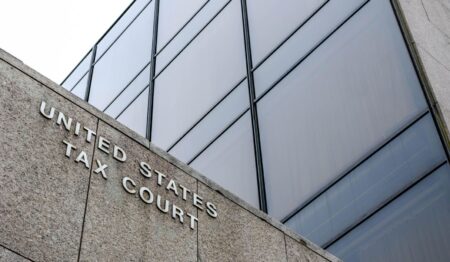The IRS Electronic Tax Administration Advisory Committee (ETAAC) has released its 2023 Annual Report to Congress. The report looks at e-filing practices and data security and makes recommendations to both Congress and the IRS that focus on electronic tax administration and cybersecurity.
Background
ETAAC was formed and authorized under the IRS Restructuring and Reform Act of 1998 (RRA 98). As part of RRA 98, ETAAC is required to report to Congress on issues related to electronic tax administration, such as taxpayer experience, identity theft, and refund fraud. ETAAC also contributes to the development of the IRS Strategic Operating Plan.
Annual Report
The report proposes actionable recommendations that align with the strategic plan and makes references to the plan throughout the report. Among its 26 recommendations, the ETAAC annual report advises Congress to provide timely tax legislation and consistent multi-year funding to be used to upgrade technology and staffing. It also urges the IRS to prioritize IRS.gov modernization and search engine optimization.
IRS.gov
ENTAAC notes that IRS.gov—the IRS website—is a critical resource that empowers taxpayers and tax professionals to find the information they need. ETAAC recommends the IRS invest resources in improving the content on its website. And, it won’t matter how good the information is on the IRS website—if taxpayers are not aware of those resources or cannot quickly find the information they are looking for, “it is all for nothing.”
One of the most significant improvements in technology the IRS has made through the pandemic is the availability of online accounts on the websites. ETAAC believes IRS.gov can and will become one of the best tools to serve taxpayers so long as the IRS continues to make the process, including registration and verification, more user-friendly.
Form 1099-K
The recommendations also highlight areas of concern focused on Form 1099-K reporting. Form 1099-K was created under the 2008 Housing and Economic Recovery Act and debuted in 2011. The original thresholds only required payers to report transactions where gross payments exceeded $20,000 with more than 200 transactions. But since transactions were going unreported, Congress lowered the thresholds to $600 with no transaction limit beginning with tax year 2022. A public outcry ensued, and on December 23, 2022, the IRS announced a one-year delay in the new reporting requirement. The change will significantly increase the work for taxpayers and businesses, as well as the administrative burden on the IRS to reconcile amounts reported versus the income on the return.
To help alleviate what are very foreseeable problems, ETAAC proposes the IRS update Form 1099-K and its instructions in advance of the 2023 tax filing season. Specifically, ETAAC recommends that the IRS add codes to the 1099-K to reflect the amount reported as unadjusted gross sales—like the boxes on your Form W-2 to carve out elective deferrals and the like. Examples might include a code for fees paid to online marketplace sales of goods or services or to indicate refunds or reimbursements.
Recognizing that some changes may not be doable before the next filing season, ETAAC stresses that IRS must provide comprehensive and clear guidance and encourage taxpayers to e-file. Having information electronically best positions the IRS to use existing anti-fraud tools, they say, and also to process the information more efficiently.
E-Filing
According to the report, for the tax year 2021, the IRS processed more than 235 million individual and business returns and issued more than $359 billion in refunds. ETAAC highlighted that electronic filing is the most efficient method to submit a tax return to the IRS. It results in more error-free returns at submission, and processing the tax return—and getting your refund—is faster.
The most recent Taxpayer Advocate’s Annual Report to Congress notes that “not only does e-filing result in quicker and better service from a taxpayer perspective, but it also saves the IRS resources.” A paper-filed return may need to be handled by multiple employees during processing. In contrast, the IRS processes an e-filed return using automation and only requires someone to step in if there’s a problem. According to the IRS, a paper-filed Form 1040 costs $7.33 to process, whereas an equivalent e-filed return costs only $0.28.
That’s good news since, according to IRS stats, through the 2023 tax filing season, over 95% of individual taxpayers electronically submitted their returns to the IRS. But taxpayers can’t file all tax returns electronically, and there will still be paper filings with the IRS. ETAAC suggests there are opportunities to enhance how IRS processes those submissions.
One stress point for tax professionals—including me—is the number of roadblocks involved in communicating with the IRS when representing and assisting taxpayers. ETAAC recommends that the IRS integrate Forms 8821 and Form 2848 into the e-filing process (yes, please). Form 8821 authorizes any individual, corporation, firm, organization, or partnership named by the taxpayer to inspect and receive confidential information for designated tax forms and years. Form 2848 allows a named individual to represent the taxpayer before the IRS. Currently, these forms must be mailed, faxed, or submitted through an online account separate from the tax return, creating a disconnect between the grant of authority and the return filing process. Wrapping them into the e-filing process would allow for more seamless processing and communication.
Better Tech
More tech options require better tech systems. Right now, the IRS is using a lot of old equipment. This was apparent in 2022 when the IRS destroyed approximately 30 million unprocessed information returns because its current technology was so outdated it could not handle the amount of paper documents. Incredibly, that only represented 1% of the paper received. The IRS said about the fiasco, “this situation reflects the significant issues posed by antiquated IRS technology.”
Of the 776 applications the IRS uses, 259, or 33%, are considered legacy because they are either 25 years or older or are written in an obsolete programming language. And while software is considered legacy when it is two or more versions behind the current version, 32% of legacy software used by the IRS is at least four versions behind the current version commercially available.
Road Map Of Tax Compliance
As part of its report, ETAAC also stressed that a “road map of tax compliance” for taxpayers must start with three essential components: guidance, communication, and education:
- Tax guidance, they write, is an essential part of tax administration that empowers individual and business taxpayers. Guidance promotes voluntary tax participation by helping taxpayers understand the available tax incentives and deductions, which can reduce their tax liabilities, ensure they receive the benefits they are entitled to, and helps them to plan their finances more effectively.
- Effective communication is critical for the IRS to administer the nation’s tax laws fairly, efficiently, and as prescribed in law. ETAAC reports that the IRS needs to communicate with taxpayers, tax professionals, and other stakeholders clearly, accurately, and timely to ensure they understand their tax obligations, rights, and options. By communicating effectively with taxpayers and stakeholders, the IRS can build trust and confidence in the tax system, promote voluntary compliance, and reduce the burden of tax administration for everyone involved.
- Finally, tax education helps individuals and businesses to better understand their tax obligations and responsibilities, which can avoid errors and potential legal issues, and make informed decisions about tax planning and compliance, resulting in accurate tax returns, lower tax liabilities, and improved financial outcomes. ETAAC says that tax education is crucial in promoting compliance, fairness, and efficiency in the tax system.
About ERTAAC
ETAAC members represent various segments of the tax community, including individual and business taxpayers, tax professionals and preparers, tax software developers, payroll service providers, the financial industry, and state and local governments.
“ETAAC plays a critical role for our nation’s tax system and taxpayers,” said IRS Commissioner Danny Werfel. “Members bring a wide range of perspectives on critical issues ranging from electronic filing and online services to identity theft and other security issues. Their recommendations help make improvements in the tax system. The IRS appreciates the hard work and public service provided by the committee members.”
ETAAC works closely with the Security Summit, a joint effort of the IRS, state tax administrators, and the nation’s tax industry, established in 2015 to fight tax-related identity theft and cybercrime.
You can read ETAAC member bios together with the report in its entirety here.
Read the full article here













